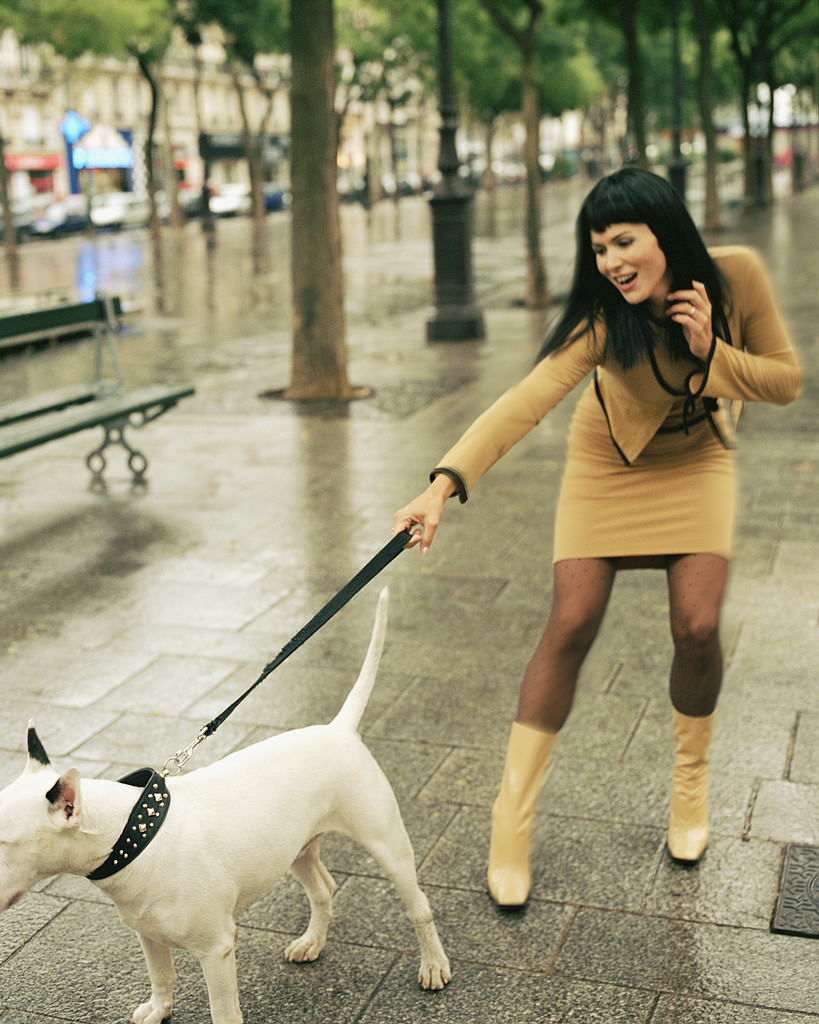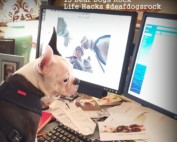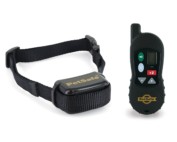Welcome guest blogger Terrie Hayward! Terrie is the owner of PAW-Positive Animal Wellness, LLC in Puerto Rico. She is a professional trainer who also lives with a deaf dog. We have so many of deaf dog owers adopting deaf bully breeds and I get so many emails telling us here at Deaf Dogs Rock their deaf dogs litterally pull them down the street every time they go for a walk.
It seems a lot of us have the same walking challenges with our deaf dogs. Instead of a nice leisurely walk with our dogs, we end up being in a battle of wills with our deaf dogs.
Terrie is going to share with us how we can work with our deaf dogs using consistent Positive Reinforcement training to teach our deaf dog to become our walking partners so we can really enjoy going out for a walk with our deafies. Be sure to check out her new pocket guide to deaf dog training: A Deaf Dog Joins The Family. Happy Training! ~ Christina, Nitro and Bud – Deaf Dogs Rock
Most people enjoy taking their dogs for walks. However if you have a dog who pulls, lunges, or otherwise drags you along, the walk might be a less than pleasant experience.
Teaching our deaf dogs to walk nicely on a leash requires patience, consistency, and positive reinforcement training. Training behaviors using positive reinforcement means looking for behaviors that we like, marking them with a visual signal, and then reinforcing them with something that the dog is willing to work for.
To start teaching a loose leash walk behavior you will need the following tools:
• a well fitted harness (recommended)
• a 6-8 foot leash
• a marker signal
• a pouch or pocket of high value reinforcers
When training any new behavior you always want to begin in the least distracting environment possible. This may mean starting to teach walking nicely on a leash inside of the house.
If you have not yet taught your deaf dog a marker signal you will want to do this first. The marker will be the communication tool which lets your dog know that in that exact instant they have done something that you like and that has now earned them access to something that they like.
Some people use a thumbs up sign or a five finger “flash.” Every time that you give your dog this signal you are letting them know that you liked the thing that they just did and that they now will get access to something that they enjoy.
In this case we will use small, high value treats. You want the treats that you have available to be small, soft, very exciting for your dog (try cheese, chicken, or hotdogs), and plentiful.
Now that you are prepared with your marker (hand signal) and reinforcers (the treats) we are ready to begin.
The first step is to teach your deaf dog that it is very reinforcing to look at you. Each time that your dog looks at you, mark with your signal, and reinforce with a tiny bit of treat.
Part of loose leash walking is being able to put on the harness while the dog is calm. As you begin to put on your harness, go slowly. Mark and reinforce your dog looking at you and/or remaining calm. If your dog begins to jump up or move around, calmly stop, remove the harness (even if you have almost gotten it on), and wait a moment for your dog to calm down.
Once they are calm, mark and reinforce the calm behavior and try again. You might have to repeat this process several times at the beginning. However, this way your dog will learn that in order to put their harness on (which equals fun/walking), they must remain relaxed.
The next phase is to literally take one step and wait. Because you have stopped, your dog will-at some point-likely look in your direction. Mark and reinforce this behavior.
You want to deliver the reinforcer (tiny bit of something yummy) very close by your side (think: the side seam of your pants) so that your dog comes close to you. Then, the leash should be loose (think “J” shaped) and you can mark and reinforce this also!
During the process, any time that your dog checks in with you, mark and reinforce this behavior!
If, at any time the leash becomes taught, stop. We also want to teach your dog that pulling does not get them to move forward. In other words, we don’t their pulling to be reinforced with forward movement.
Instead, stop. If your dog glances back at you, mark and reinforce! If not, begin taking steps backward with your eyes on your dog. Eventually they should turn to look at you. Immediately, mark & reinforce this checkin behavior.
Again, be sure to deliver the reinforcer close to you so you can set your dog up for success by having a loose leash which you can then also mark and reinforce.
Keep in mind that in these early stages, your walks will likely be much shorter. However, they will also be much more focused on training the behavior that you want to see continue. Too, as your dog catches on to this “game” they will be using their brain to figure out how they might earn reinforcers, which provides mental stimulation and is thus tiring as well.
Set everyone up for success by having short, successful sessions. Mini focused walks in low distraction environments will eventually translate to longer laps in higher distraction areas.
As a re-cap, some final tips include:
1. Train & reinforce “checking in with you” behavior.
2. Begin in a low distraction environment.
3. Take it one (literally) step at a time.
4. Mark & reinforce the “j” shaped loose leash.
5. If the leash is taught, walk backwards & wait for your dog to orient to you-then mark and reinforce that “checkin.”
6. Reinforce close to you so that your dog is close to you.
7. Mark & reinforce behaviors that you like as often as you see them!
Soon with lots of consistent repetition, you and your dog will be strolling comfortably down the road!
Terrie Hayward is the owner of PAW-Positive Animal Wellness, LLC in Puerto Rico. She holds a Master’s degree in Education is a Karen Pryor Academy Certified Training Partner, and also holds Knowledge Assessed certification via the Council for Professional Dog Trainers. Terrie writes and blogs for several magazines including Pet Business & Pet Groomer & is the author of the newly released book, “A Deaf Dog Joins the Family-Training, Education, & Communication for a Smooth Transition.” She consults with clients using positive reinforcement training and behavior modification via applied behavior analysis & is a member of the Pet Professional Guild. For additional information you can reach her via her website at positiveanimalwellness.com










